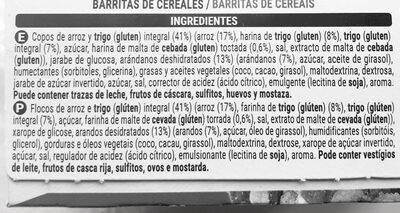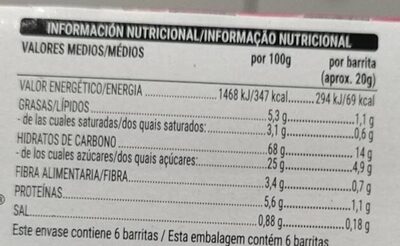Barritas arándanos - Hacendado - 6 x 20 g
This product page is not complete. You can help to complete it by editing it and adding more data from the photos we have, or by taking more photos using the app for Android or iPhone/iPad. Thank you!
×
Barra-kodea: 8480000093745 (EAN / EAN-13)
Kopurua: 6 x 20 g
Ontziratzea: en:container, es:Plastico aluminizado
Markak: Hacendado
Kategoriak: en:Snacks, en:Sweet snacks, en:Bars, en:Cereal bars
Etiketak, ziurtagiriak, sariak:
Source of fibre, en:Green Dot, High fibres
Origin of ingredients: Espainia, es:Palencia
Manufacturing or processing places: Spain
Saltzen diren herrialdeak: Espainia
Matching with your preferences
Ingurumena
Ontziratzea
Transportation
Report a problem
Datuen iturria
Product added on by openfoodfacts-contributors
Last edit of product page on by thaialagata.
Produktuaren orria -gatik editatua davidh, dieta2022, ecoscore-impact-estimator, elcoco, kiliweb, muldev, musarana, orcinus63, org-app-elcoco, packbot, roboto-app, sensey, tacite-mass-editor, teolemon, yuka.SHBzZ1M2c0wvY2dGeGZGaXBSanNvLzFIeExPa2VqT01HN0F0SVE9PQ, yuka.ZnFjWlNmbGRsdGM0d1BKdjhrLzUyZDVTbjZDYmV6aVVBdWdKSWc9PQ, yuka.sY2b0xO6T85zoF3NwEKvln5Zc97Dh2rJbTbimWuWn8rScqPrefRzsoWmEKs.










